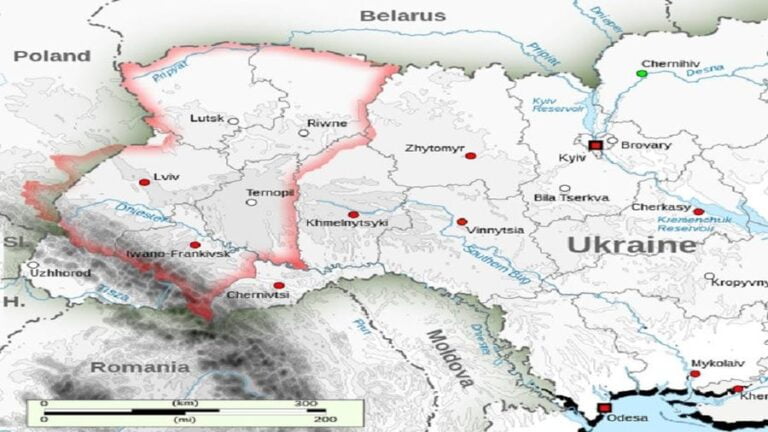2016 Documentary Looks at America’s “National Bird”
They see everything, they can kill you with impunity and they may be coming to a battlefield or suburb near you.
Filmmaker Sonia Kennebeck, in her debut documentary film, National Bird, examines America’s use of flying unmanned drones in our wars overseas, their effect on drone operators and what it means for the future of warfare.
The film, released in February 2016, centers around three subjects, all former operators of the unmanned vehicles or analysts of drone surveillance imagery.
We are introduced to Heather early in the film, a former Air Force drone imagery analyst and one of the first to publicly criticize the secret drone program.
“Sometimes you would watch them for days,” Heather said in the film. “Then you’d have intel that this guy’s a bad guy and you’d wait until he walked out into the filed to meet with some friends or something, and you’d blow him up—drop a Hellfire missile on him.”
A young woman who appears to be in her mid-20s, Heather said she lost co-workres to suicide, and has her own problems with a sleep disorder, anxiety, “horrible memories” and suicidal thoughts after taking the analyst position with Air Force intelligence. The nature of the job, not only watching people die but having some responsibility in their death, has taken a psychological toll on some of the operators of the deadly vehicles.
While much of the video footage seen by analysts and operators is captured by forward looking infrared (FLIR) cameras, a type of thermal imaging camera that shows only heat signatures, that does not obscure the carnage of the strikes that operators authorize and carry out.
“We can’t just bomb someone and fly away, we have to follow through,” Heather said, describing the gruesome scenes she often had to witness. “The bomb hits and you wait for it to cool down a little bit, and you can see body parts. You can identify like, that could be the lower half of the body, that could be a leg.”
Lisa, another subject in the film and a former Technical Sergeant on a drone surveillance system, spoke of the ubiquitous reach of the drone program—a blanket term covering unmanned aerial operations carried out by both the military and the CIA—in near-dystopian terms.
“What I can tell you is that to me—one person who worked within this massive thing—it’s frightening,” Lisa said. “This is global. This is getting information anywhere, at any time, shooting people from anywhere, at any time.”
Lisa added that the surveillance system she worked on identified 121,000 targets, all presumed “insurgents,” in just a two-year period. “That’s 121,000 lives affected by technology we control,” she said.
Human rights groups and critics have long been skeptical of the use of drones in America’s wars abroad, arguing they make killing innocents far too easy, and that there are no consequences for those who authorize wrongful deaths. Dead innocents are simply filed away as “collateral damage.”
The claim that drones are “precision weapons” capable of carrying out “surgical strikes,” Heather said, is “completely ridiculous, it’s completely ludicrous[…].”
“If they really think they can send a bomb through a window of a compound and hit one militant, then why are we seeing so many civilians dying of collateral damage?” she asked.
The United States began using drones in 1995, flying the General Atomics MQ-1 Predator drone over the skies of Bosnia as part of the NATO intervention in that country. At that time, however, the drones were used solely for reconnaissance. In 2001 the first Hellfire missile was successfully fitted to a Predator, and the use of the unmanned vehicles has skyrocketed since.
Drones would carry out their first armed missions in Afghanistan, after the U.S. invasion in October 2001, and since have been used in at least Iraq, Pakistan, Yemen, Somalia and Libya.
As many as 6,015 people have been killed by American drones in Afghanistan, Yemen, Somalia and Pakistan since 2002, up to 631 of them civilians, according to data collected by the Bureau of Investigative Journalism. Those estimates, however, are conservative and don’t cover every country where U.S. drones are active.
Perhaps most alarming, four American citizens have been killed by American drone strikes, including Anwar al-Awlaki, an American-born al-Qaeda propagandist, and his 16-year-old son, Abdulrahman, whose death was “collateral damage.”
President George W. Bush introduced what are known as “signature strikes,” or targeted assassinations done on the basis of certain behavioral “signatures,” in 2008, and President Obama would vastly expand their use. Signature strikes have been criticized for relying on what amounts to educated guesswork, not concrete intelligence, in killing any military-aged male who fits the “signature” of militant activity.
In addition to signature strikes, “High Value Targeting” (HVT) is another important term of art for drone operators, referring to a particular individuals who hold greater importance in enemy militant organizations, but some operators are critical of the standards in place for HVT operations.
“When it comes to High Value Targeting, every mission is to go after one person at a time, but anybody else that’s killed in that strike is just blanketly assumed to be an associate of the targeted individual,” said Daniel, a former private contractor, signals intelligence analyst and one of the main subjects in National Bird.
So as long as they can reasonably identify that all the people in the field of view of the camera are military aged males, meaning anyone who’s believed to be age 16 or older, they are a legitimate target under the rules of engagement.
A secret 2009 CIA assessment of High Value Targeting operations obtained by WikiLeaks acknowledges the relative ineffectiveness of such operations in Afghanistan, where the Taliban has been able to rapidly replace leaders.
While the use of unmanned aerial vehicles for both military and commercial purposes will likely only continue to grow in popularity, films like National Bird highlight the need for vigorous public debate about drones. Aside from their militarized applications, commercial and law enforcement drones carry their own potential problems, particularly in the realm of privacy.
Most pressing of all, the American military must develop better standards and practices for the use of drones over foreign war zones. For every innocent man, woman and child killed, a militant is radicalized. For every gruesome death witnessed by American drone operators, a person is traumatized.
“People die, things get destroyed and people who are aged 18-24 sit and watch it,” Lisa said. “How can anyone not find that disturbing?”
By Will Porter
Source: The Daily Sheeple







